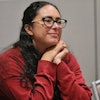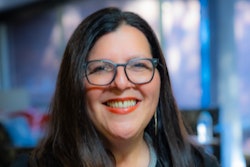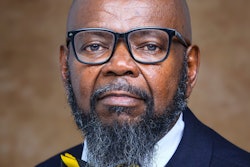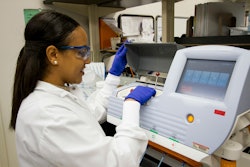Dental student Hector Godoy easily relates to his patients at a University of California, Los Angeles clinic. Like many of them, Godoy never went to a dentist as a child. His exposure to medical professionals was limited to community clinics when home remedies failed. “There weren’t opportunities for check-ups or preventive medicine,” he says.
When he graduates from UCLA next spring, he plans to work in an underserved area of Los Angeles. In the eyes of health care educators nationally, Godoy is a de facto role model, the kind of student sought for a pipeline of underrepresented minorities (URMs) whose career can improve access to health and wellness services among disadvantaged populations.
“Overwhelmingly, these individuals go back to their communities to work,” says Dr. Michael Ellison, minority affairs committee chair for the National Association of Advisors for the Health Professions.
Yet, ever-climbing student fees at all UC campuses make it more challenging to attract individuals like Godoy, a first-generation college student, to health-science and related graduate-level programs. Along with a 32 percent systemwide fee increase that UC regents approved less than a year ago in response to an ongoing state fiscal crisis, regents approved myriad wide-ranging spikes for professional degree programs that ran as high as 64 percent. Professional degree fees (PDFs) make up a portion of the total retail price for a graduate education.
A father to three children, Godoy figures to amass about $160,000 in debt, close to what the average UCLA dental student borrows nowadays. However, his fees of $36,794 for the next academic year, excluding housing and books, are about 16 percent higher than last year’s bill.
Widespread public perception is that graduate school is a luxury rather than a necessity, although some professions — dentists, doctors and pharmacists, to name a few — mandate more than a bachelor’s degree.
Furthermore, people living in underserved communities everywhere have come to rely on the clinical and field work of graduate-level, health-science programs. As an example, UCLA’s student-staffed dental clinics record a total of 30,000 patient visits annually. Future professionals like Godoy get hands-on experience while patients are charged only about half of what a private dentist can command. Many patients are uninsured; some know limited English.
A native Spanish speaker, Godoy translates for at least one patient daily. But beyond literal explanations about treatment and medication, “there’s something to be said for being able to relate to a patient’s life circumstances,” he observes. One of six children, Godoy’s father was a construction worker and his mother a seamstress.
A quick look around the country confirms how badly Godoy and other URMs are needed in health professions. Hispanics make up only 5 percent of dentists and 6 percent of doctors and surgeons, according to 2008 Bureau of Labor statistics. Blacks make up 3 percent of dentists and 6 percent of doctors and surgeons. Meanwhile, Hispanics made up 15 percent and Blacks 12 percent of the U.S. population in 2008, according to the U.S. Census Bureau’s American Community Survey.
Graduate studies at UC, across many disciplines in and outside of health sciences, are among the most respected nationally. Their peers among public institutions include the University of North Carolina, the University of Michigan and the University of Washington. To be sure, rising costs are normal. For Californians, private school tuition and out-of-state costs at other public universities still run thousands of dollars higher than at UC. However, many public institutions limit their annual increases to 9 percent or less in health sciences, Ellison says, calling the double-digit increases at UC “unusual on the national map and, hopefully, will taper off sooner rather than later.”
The importance of public universities providing graduate-level programs to in-state residents at affordable costs cannot be overstated, Ellison, an assistant dean of the College of Pharmacy at Chicago State University, and other experts say. Aside from historically Black and other minority-serving institutions, public schools produce most of the minority professionals with advanced degrees. UC San Francisco, for instance, led all public and private medical schools statewide last year with a first-year class made up of 31 percent URMs, a figure that school officials expect will be comparable this fall. Yet UC admissions officials say that, during interviews with prospective students, URMs are the ones who most often say that rising fees could potentially price them out of graduate school.
Maintaining Diversity
Much publicity has focused on the UC system’s staggering fee hikes, including that 32 percent across-the-board jump imposed on undergraduates as well as students in some graduate programs.
But many UC graduate programs also routinely charge PDFs as part of their annual total cost. The disciplines span health sciences, business, law and public policy, among others. The regents approved significantly higher fees for graduate programs based on plans by each campus to use at least one-third of new monies for student financial aid. Yet in a series of interviews by Diverse in recent months, students in various graduate programs said their primary university offers came in the form of loans.
And that has many within UC wondering — and worrying — whether sooner or later, hard-fought progress in diversifying the ranks of graduate students will slide backward under the weight of high costs.
Kyle Scates, a UCLA student pursuing a master’s in social work (MSW), says prospective students in recent months “have said, ‘Whoa!’ and given second thoughts about applying” because, this fall, the total fees for that program soar 70 percent to $17,777 when a PDF, being charged for the first time, is added.
Several of Scates’ MSW classmates say they would have postponed enrollment had they been able to predict the swelling of fees between their first and second years — an upsetting jolt. Regents approved the higher costs shortly after they’d begun their studies, which include required field work at nonprofit and public-interest agencies. The assignments, which are commonly unpaid or low-paid, are too time-consuming for most students to hold part-time jobs. MSW student Eva Hom, for instance, says she draws only a tiny stipend that barely covers gas for her 60-mile round-trip commute to do field work at a mental health agency.
So far, this fall’s entering class of MSWs at UCLA appears as diverse as those in recent years, at 56 percent ethnic minority. The much higher fees will finance more scholarships, additional course offerings, expanded career services and more guest speakers, says Dr. Robert Schilling, chair of the social work department. Yet he concedes that, going forward, future fees will surely inch upward again, potentially causing fewer minorities to enroll.
The struggle to recruit URMs is far from new in California, where precipitous dropoffs were seen in some college programs following the 1996 passage of Proposition 209, a ballot measure banning public institutions from using affirmative action in hiring and admissions. At UC San Diego’s medical school, for example, only 6 percent of the 1999 first-year class were Black, Hispanic, native Hawaiian/Pacific Islander or American Indian. Yet before voter approval of Prop. 209, Dr. Carolyn Kelly, associate dean for admissions and student affairs, says about 22 percent of the entering class for a dozen consecutive years consisted of URMs. Student fees there are expected to run about 11 percent higher than a year ago.
California Gov. Arnold Schwarzenegger has pledged to stop the deep cuts to higher education, but there’s no guarantee that lawmakers will heed the wishes of the lame-duck governor.
Several UC officials agree that diversity in enrollment is also tied partly to an institution’s investment and outreach to URMs. At UC Berkeley, about 20 percent of this year’s incoming students seeking their master’s in public health (MPH) are underrepresented minorities, despite an estimated 22 percent increase in graduate fees, says Dr. Stephen Shortell, dean of public health. MPH graduates work as epidemiologists and environmental health specialists, among other things. Last fall, about 17 percent of first-year students were URMs, and, five years ago, it was only 9 percent. Shortell attributes the growth in part to a private grant that helps increase the school’s overall resources and staffing.
The significance of such initiatives can’t be underestimated, says Dr. Bruce Sanders, assistant dean of outreach and diversity at UCLA’s dental school. He notes that a post-baccalaureate program, supported in part by a foundation grant, has resulted in Godoy and others from underserved communities who, after a year of intense study in sciences, have subsequently gained admission to various dental schools.
“It takes an awful lot of work to get a few students prepared academically,” Sanders says, “but one student can have a huge impact on a community. In a rural area or the inner city with so few practitioners, these people become major figures. They’re stars.”
During a recent drive through South Central Los Angeles, Godoy did not see a dentist office. He doesn’t remember seeing one while growing up there, either. His first trip to a dentist came at age 19, when he joined the Air Force. Ironically, he worked as a dental assistant for five years while on active duty, a stint that kindled his interest in dentistry as a career.
“I can understand why so many people have never seen a dentist,” he says. “Costs are a big factor, just like they were in my family.”



















